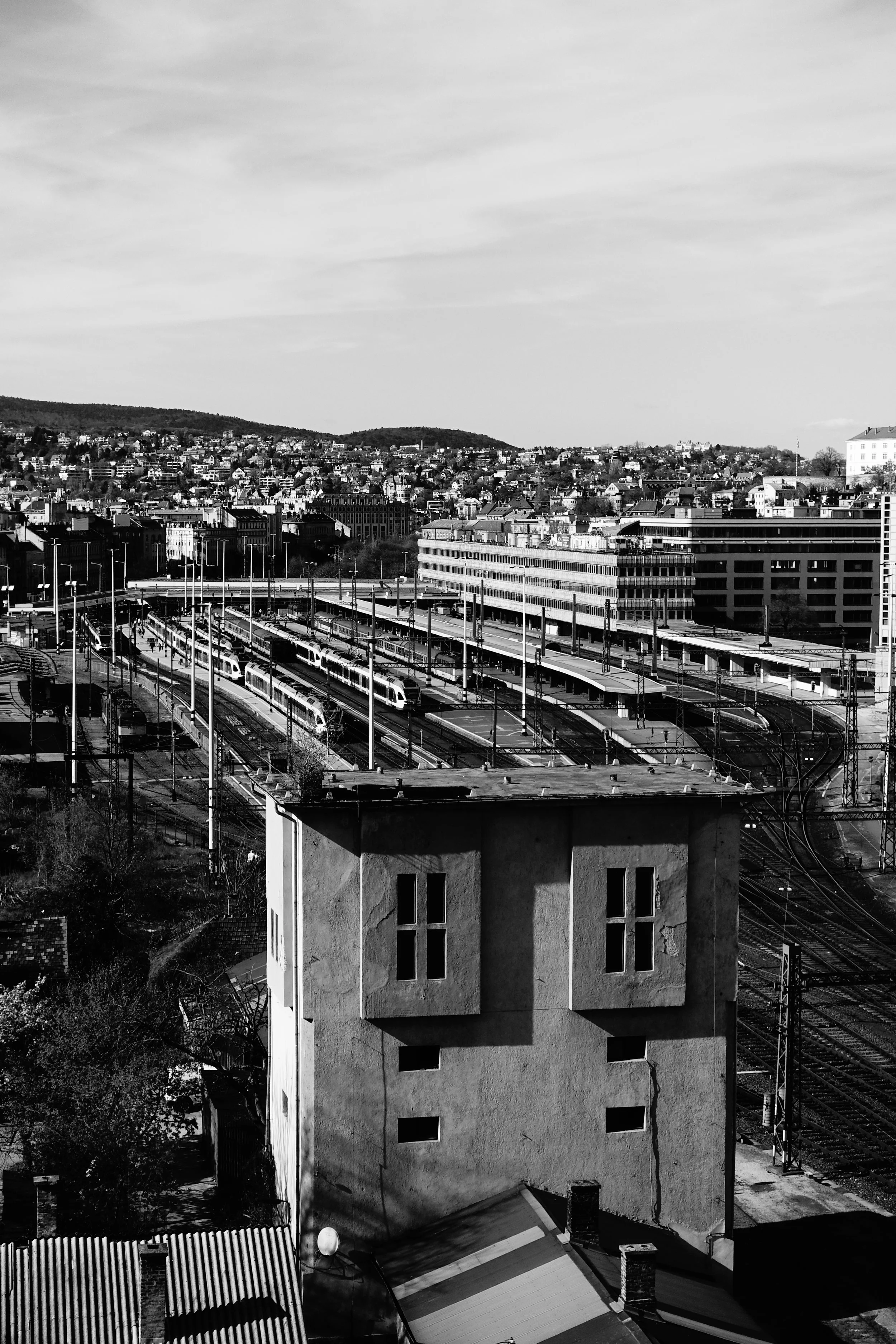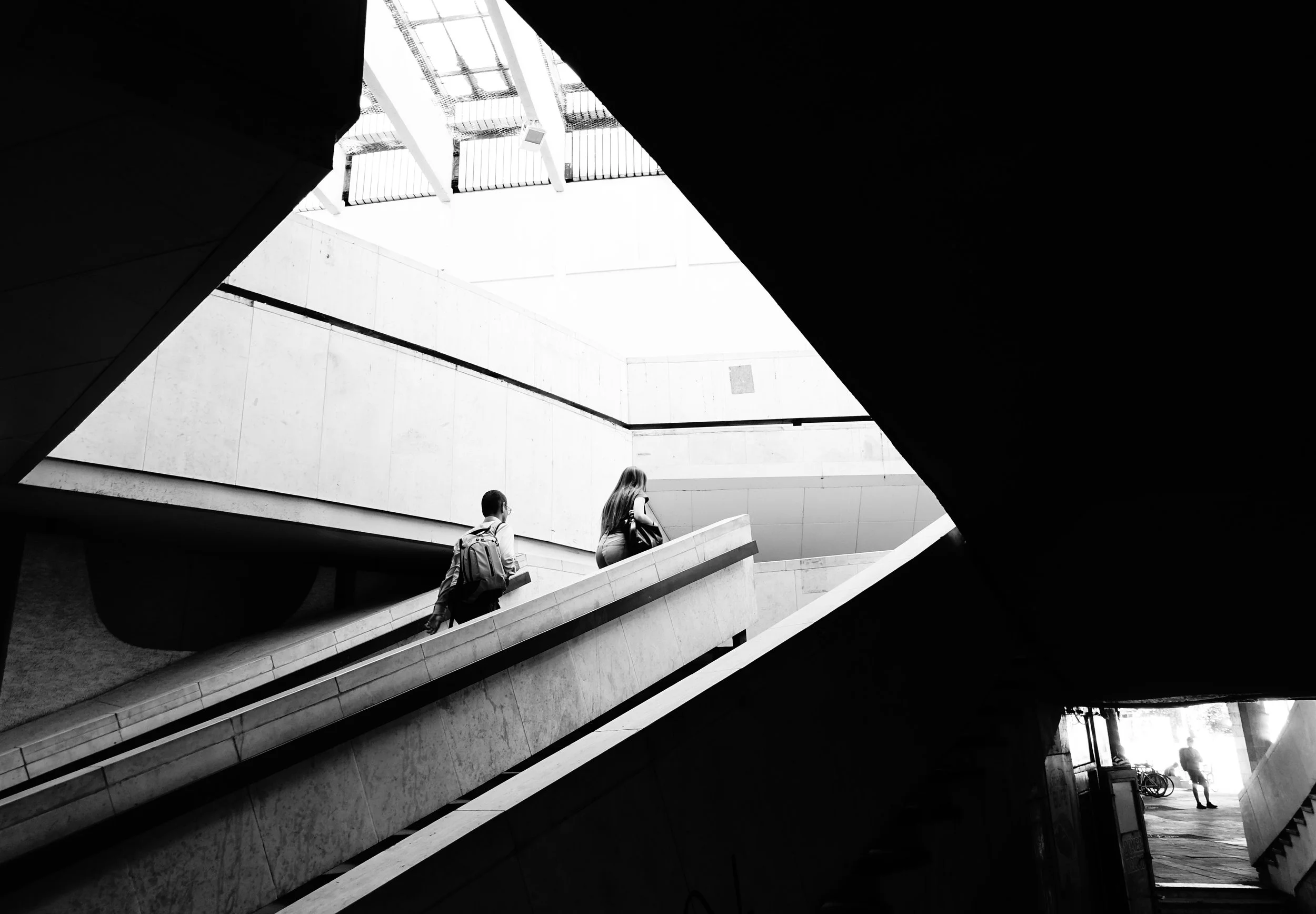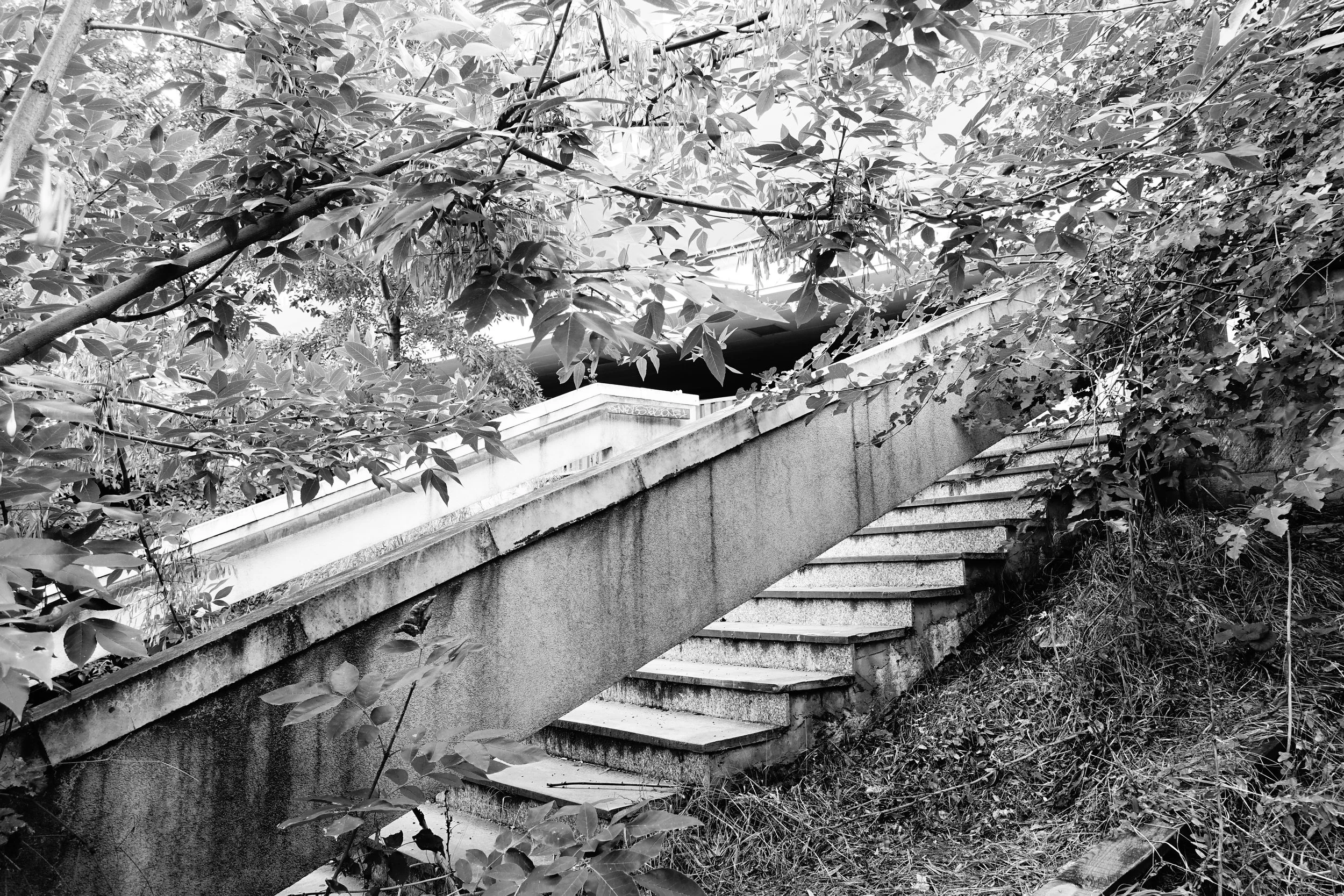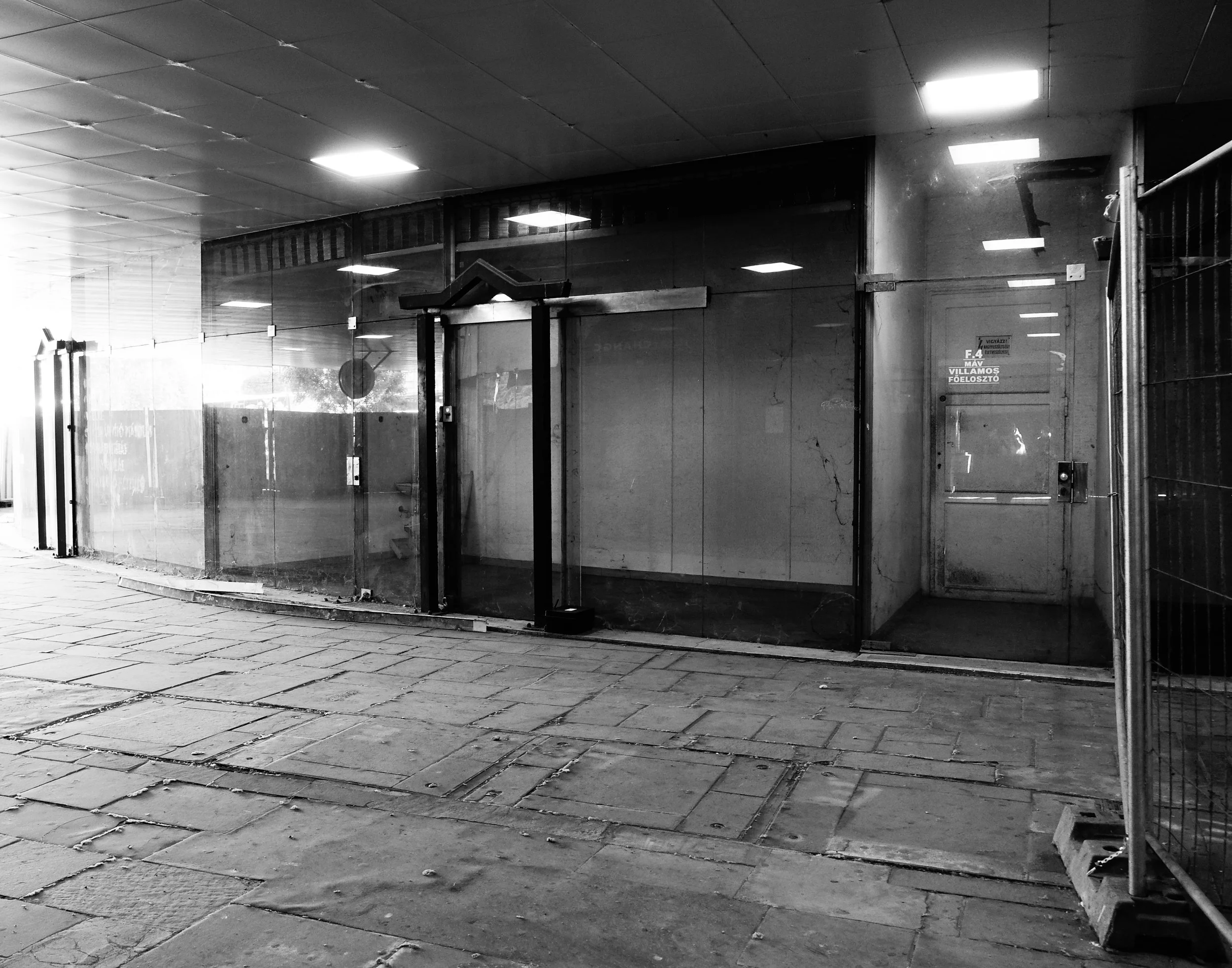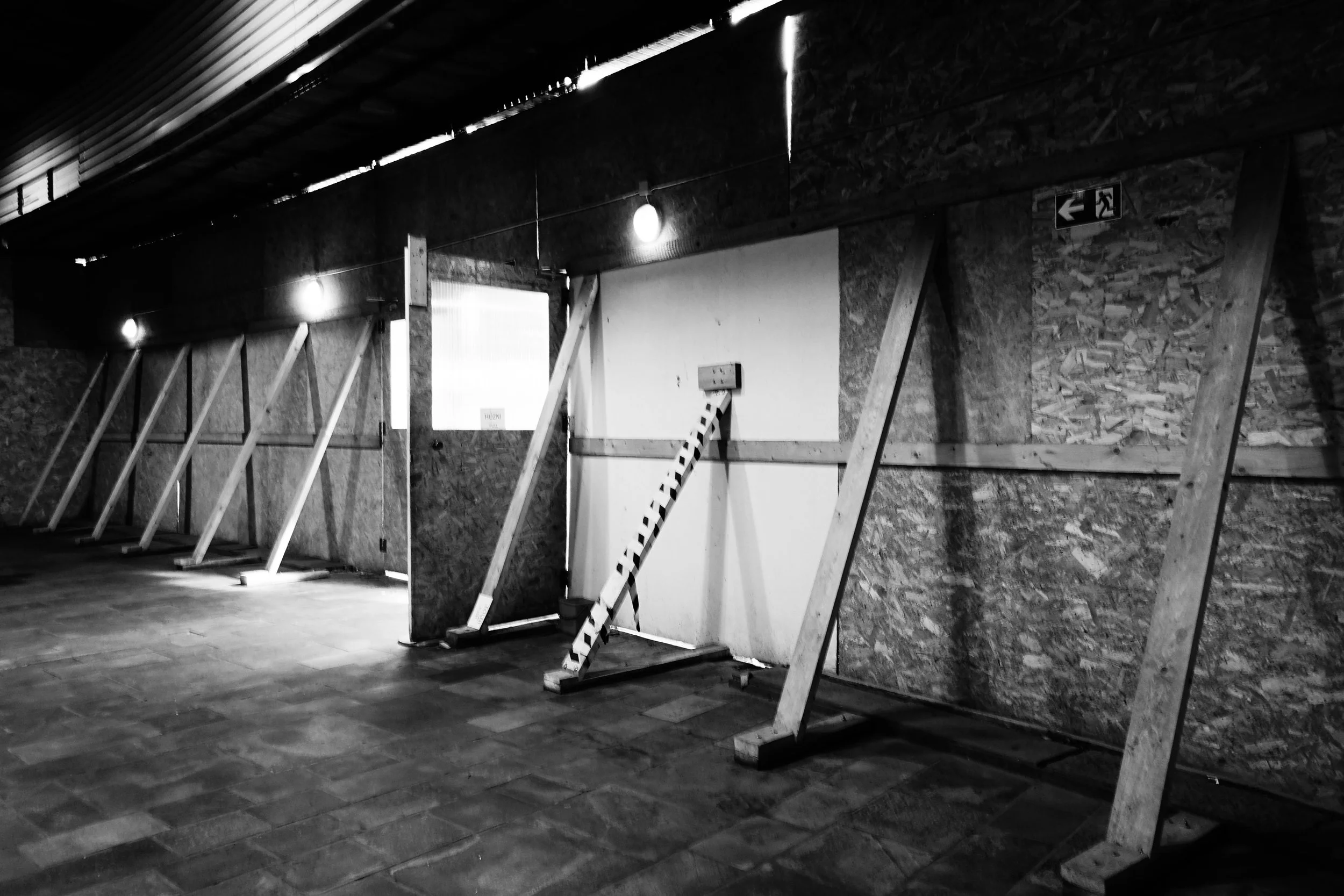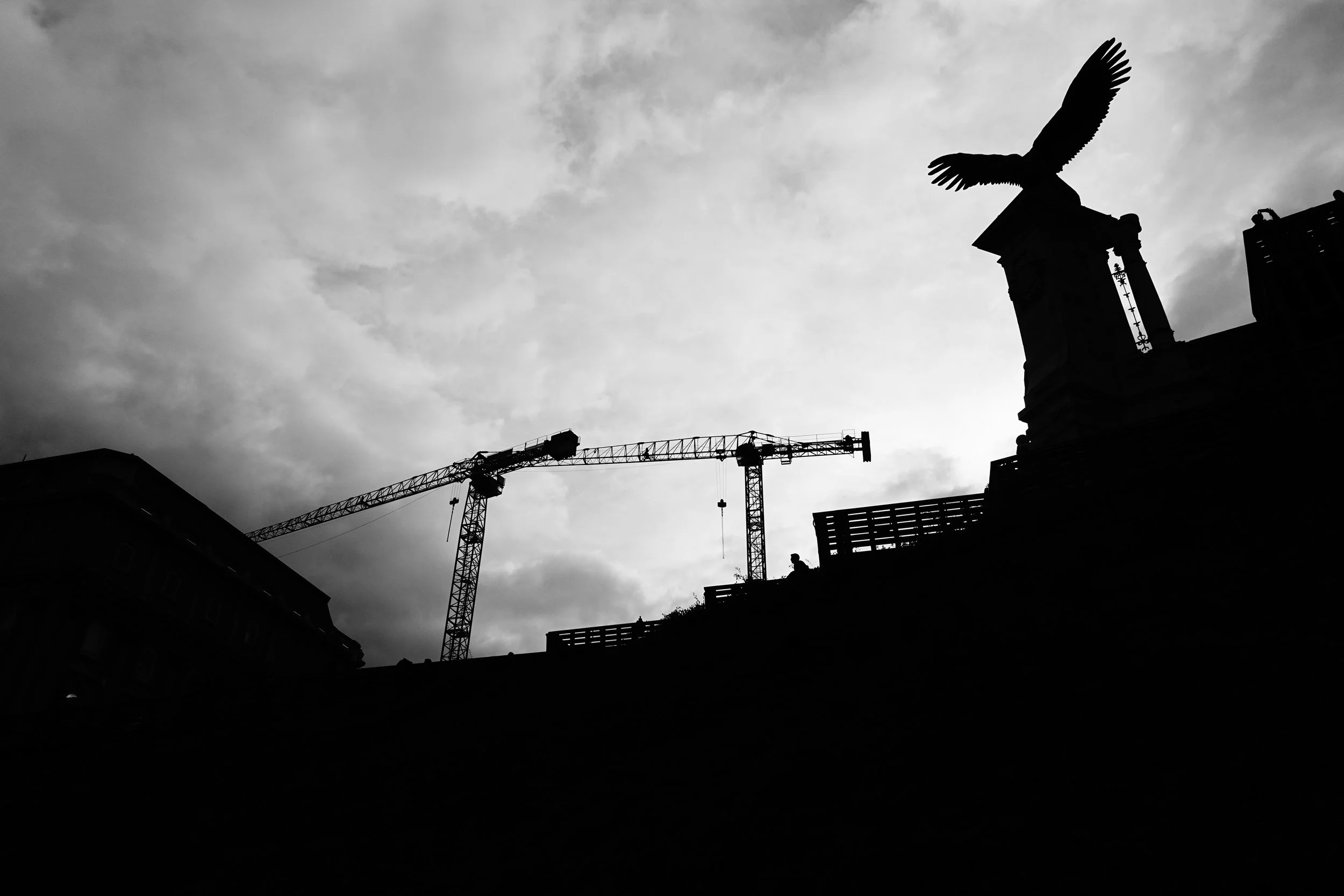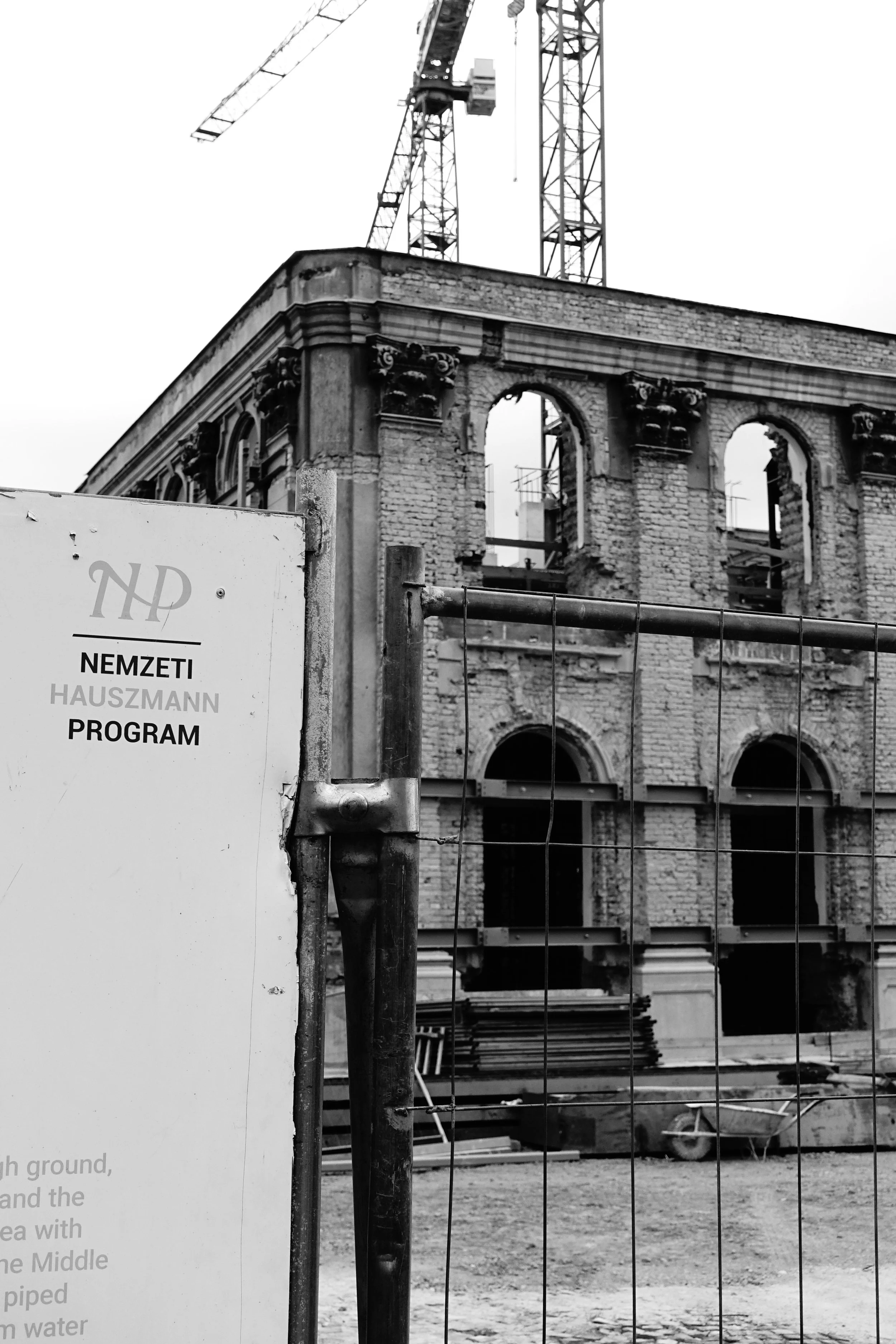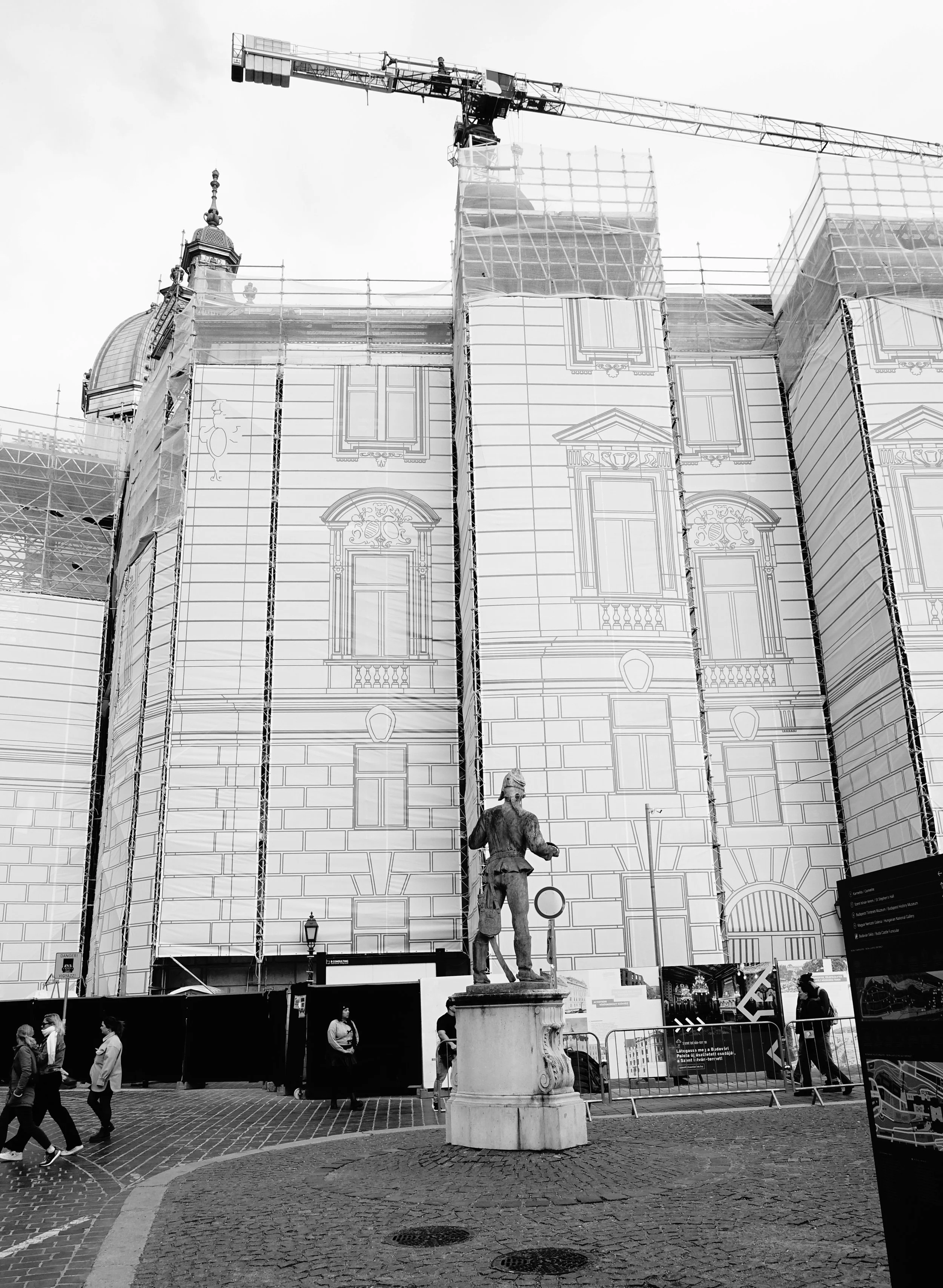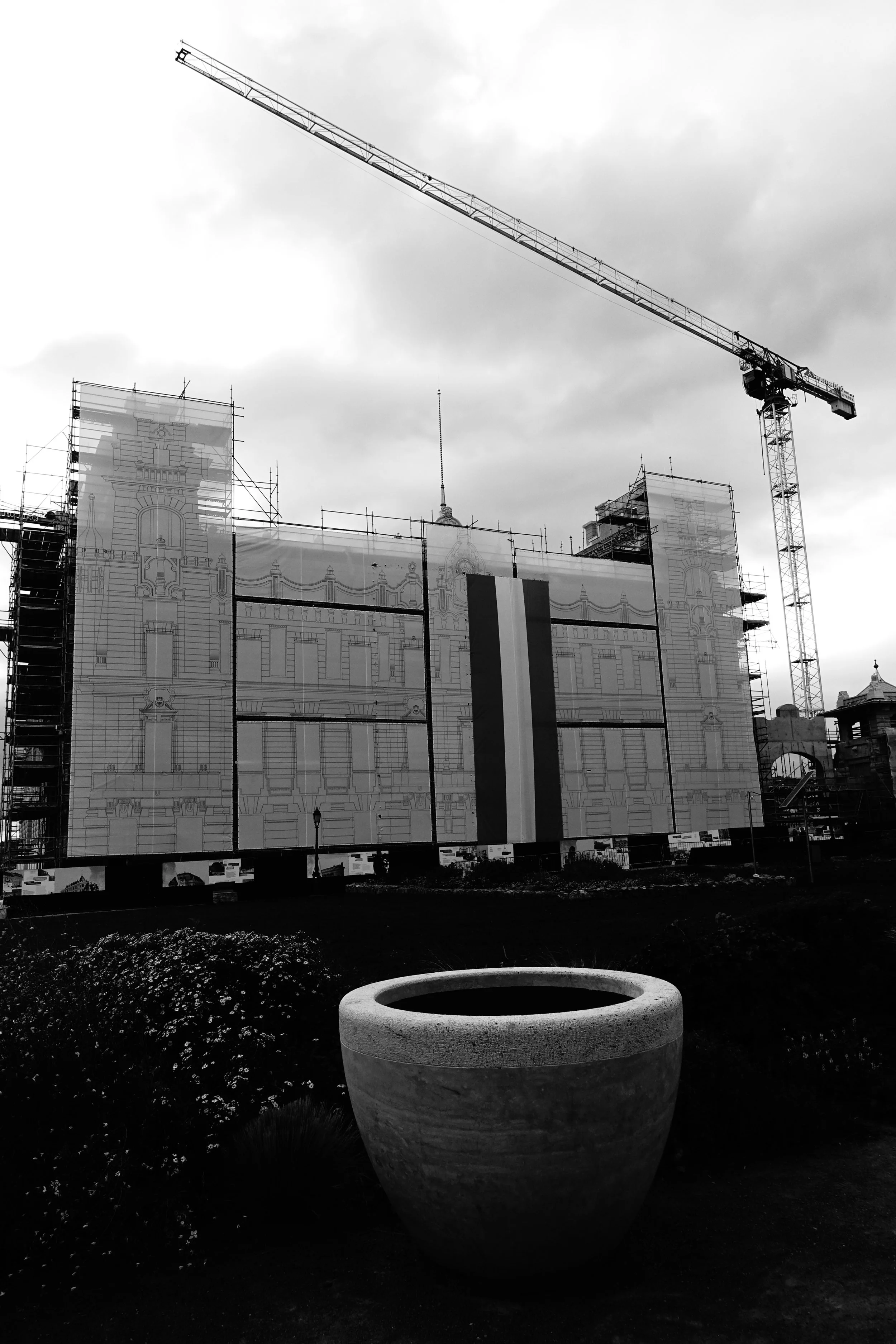All going south in Buda?
The Castle District in Budapest is the jewel in the city’s crown. Currently, it’s being shined to perfection for future generations to enjoy, further restored to resemble even more closely, the glorious plateau that existed before the siege of 1945. The post-war reconstruction during the Soviet era was impressive. Now, even more buildings damaged or partially destroyed are being rebuilt and returned to their former glory. The central part of the castle hill has come to resemble a building site, with cranes in every direction, yet tourists still flock here to visit museums and galleries, or just look out at the beautiful autumn views. Disregarding the current disruption and despite concerns by critical architects that the work lacks sufficient attention to detail, there is little doubt that the regeneration will only make the jewel shine even brighter.
Déli pályaudvar seen from above.
But at what cost you might ask, to a middle-income European country, that’s heavily propped up by the EU? That’s a good question. Half a mile away at the southern railway terminal, spending priorities in Hungary are clear to see. From the hill above, Déli pályaudvar looks like a worm hole as the shiny trains slither in and out on bright October afternoons. Only from close up does the Déli terminal fully reveal itself as a terrible eye sore. Opened in 1975, as an example of socialist modernism, it looks like it was meant to blend in with the surroundings. Bordered on one side by a shockingly ugly office block, which houses the railway administration, and on the other by a high fence next to a busy main road, it is well hidden. As though a place of shame. The front of the building is clothed in a ghastly blue screen carrying details of the merger between the rail company MAV and the national bus provider but without identifying the name of the terminal. Only from an elevated perspective on trams or buses can you identify that this is a station at all.
If you’re running late for a train, then you probably won’t notice much but linger at all in this concrete cavern and the neglect will strike you. Big time! Much of the inner part of the station is closed to the public, presumably for safety reasons related to a faulty structure but possibly because the pure ugliness would damage the most insensitive of souls. There are at least thirty closed retail outlets inside the worm hole and a small wood is growing around external stairs that have been closed for a decade or more. Soon, the wild boar who are coming down from forested hills and visiting the city streets in increasing numbers, will take up residence there and feel quite at home.
Inside Déli pályaudvar
Woodland emerging around the station entrance
Yet the station is still fully functioning, with trains running towards the south and west of Hungary. Mostly on time, mostly comfortable and very reasonably priced, some even continue to romantic destinations like Prague and Vienna. This is the station you depart from if you want to go to Lake Balaton with its summer time pleasures. Happy looking holiday makers often throng the platforms. Unlike the Eastern and Western Terminals, there is no statement architecture. Without the classical frontage of the Eastern terminal or stylish Eiffel built roofing of the Western one, there is little sense of an arrival. Déli pályaudvar was clearly meant to be unobtrusive but it seems to be crumbling away into the earth at a rapid pace. While being the most modern of the three terminals, it’s clearly the most neglected. Quite frankly, the Roman amphitheatre three miles to the north in Óbuda is in better condition and that was built around 145 during the reign of emperor Antonius Pius!
Once inside Déli pályaudvar, you find less of a worm hole and more of a termite’s nest. Regular travellers know exactly where to go, marching head down, sensibly avoiding their surroundings. Foreigners clamber around in the murky passage ways working out where the platforms and ticket office might be. Most entrances to the ticket office are closed from below and the main building only seems to be held in place by a series of wooden posts on each side. As though the termites have really had their fill! Without functioning escalators or lifts in the main station, this feels like a nineteenth century building. Dragging heavy suitcases up from the Metro station to the elevated platform is a task only for the fit and healthy. So much for modernism!
Almost all of the thirty or more shops inside the station are closed.
The national and international ticket office at Déli pályaudvar
Another story could be told about health care spending. In the EU, only Switzerland spends less of GDP than Hungary on health provision, which explains the poor state of Hungarian hospitals and GP surgeries*. Beyond the condition of the real estate, there are also long queues and waiting lists to access treatment. It looks like this issue will become central in next year’s general election. And we know what happened to the recent Conservative government in the UK, when it allowed the NHS to deteriorate!
When it comes to symbolic matters or national heritage then the picture is different. Hungary is a country of beautiful churches, delightful town squares and modern sports stadiums. As a percentage of GDP, only Finland among EU countries, spends more than Hungary on recreation, culture and religion**. Budapest is now a year-round holiday destination. Making the Castle District even more beautiful will surely keep the tourist numbers and their spending high, but first impressions do count. Arriving at the Eastern and Western railway terminals, there is a sense of architectural grandeur. Of a nation that cares about its people and visitors. Arriving at Déli pályaudvar there is just a sense of post-communist decay. Of arrival in a third world country even. Apologists will shrug and say- ‘Welcome to the Hungarian reality’, as though there could be no other.
Something should be done to improve the experience here. Refurbishment, closure or possibly- implosion! A reallocation of funding from the hill to the valley definitely seems to be in order. Then even more tourists will stay to visit the shiny castle district with its glorious gaze.
* https://ec.europa.eu/eurostat/statistics-explained/index.php?title=Government_expenditure_on_health
Castle district seen from below the Turul bird statue.
The castle regeneration is funded through the Hauszmann programme.
Another historical building undergoing refurbishment in the castle district.
The neglect may be part of a master plan to close the station completely. There has been talk for many years of converting a large junction in the south of Buda, Kelenföld, to become Budapest’s third terminus. Closing Déli would free up a huge swathe of prime building land between the two locations. Designations of south, east and west don’t reflect the terminals’ locations in the capital. Rather, they were initially named to indicate which station you should embark from to reach the various parts of the Austro-Hungarian Empire. Strangely, a northern terminal was never constructed and in terms of destination, the original designations of arrival are only approximate today.
Déli is close to the Castle district but the route by foot involves many steps on the steepest side of the plateau. For tourists, it is better to stop off at the Wagon train carriage restaurant just across the road from the station and enjoy a beverage or two, before calling a taxi. The restaurant offers a comfortable memory of the time after the First World War when thousands of Hungarian refugees from the former Habsburg Empire lived in old railway carriages near Déli, sometimes for years, as the exodus created a huge housing crisis in the capital.
That drama in the area is long forgotten and despite a monstrous road traffic system nearby, it is a relatively green and pleasant, if somewhat noisy neighbourhood. As long as I ignore the crumbling buildings and sense of abandonment below ground, I am happy to travel from Déli pályaudvar. Once you know your way around, it’s easy to find your platform. Despite all the closed shops, there are ample take away food stands to grab something for the journey. Once familiar, then compared to larger stations, it feels stress free to navigate. Maybe, there was something clever in the original design after all?
So, does it matter that you depart from or arrive in Budapest at a crumbling termite’s nest? I don’t hear many local complaints. Fatalistic Hungarians attend similarly decrepit public buildings on a daily basis and have become immune to them. As long as they can register their child’s birth on time, renew their ID cards or visit the local planning office when needed, the condition of state owned ‘office’ buildings seems low on the public agenda. Even the walls of the Budapest ‘Town Hall’ in the centre of the city are pitted and crumbling without attracting media attention.
Outstanding heritage site in the Castle District being returned to former glory.
